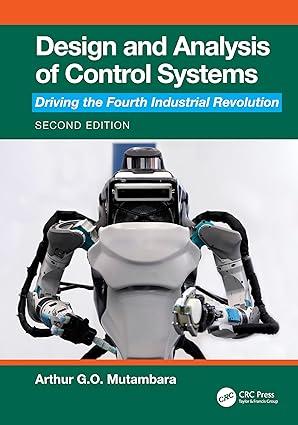(a) Check the controllability and observability of the following two systems. [ begin{aligned} & dot{mathbf{x}}=left[begin{array}{ccc} 1 &...
Question:
(a) Check the controllability and observability of the following two systems.
\[
\begin{aligned}
& \dot{\mathbf{x}}=\left[\begin{array}{ccc}
1 & 4 & 3 \\
0 & 2 & 16 \\
0 & -25 & -20
\end{array}ight] \mathbf{x}+\left[\begin{array}{c}
-1 \\
0 \\
0
\end{array}ight] \mathbf{u}, \quad \mathbf{y}=\left[\begin{array}{lll}
-1 & 3 & 0
\end{array}ight] \mathbf{x} \\
& \dot{\mathbf{x}}=\left[\begin{array}{ccc}
1 & 0 & 0 \\
0 & 0 & 0 \\
-2 & -4 & -3
\end{array}ight] \mathbf{x}+\left[\begin{array}{c}
1 \\
0 \\
-1
\end{array}ight] \mathbf{u}, \quad \mathbf{y}=\left[\begin{array}{lll}
1 & 0 & 0
\end{array}ight] \mathbf{x} .
\end{aligned}
\]
(b) For each of the systems of part (a), find the controllable modes, uncontrollable modes, observable modes, and unobservable modes. (Hint: use the MATLAB commands ctrbf and obsvf.)
(c) For each of the systems of part (a), assuming the states are available for feedback, determine whether a state feedback controller can be designed to stabilise the system.
(d) For each of the systems of part (a), assuming the states are not available for feedback, determine whether a controller and an observer can be designed to stabilise the system.
Step by Step Answer:

Design And Analysis Of Control Systems Driving The Fourth Industrial Revolution
ISBN: 9781032718804
2nd Edition
Authors: Arthur G O Mutambara





